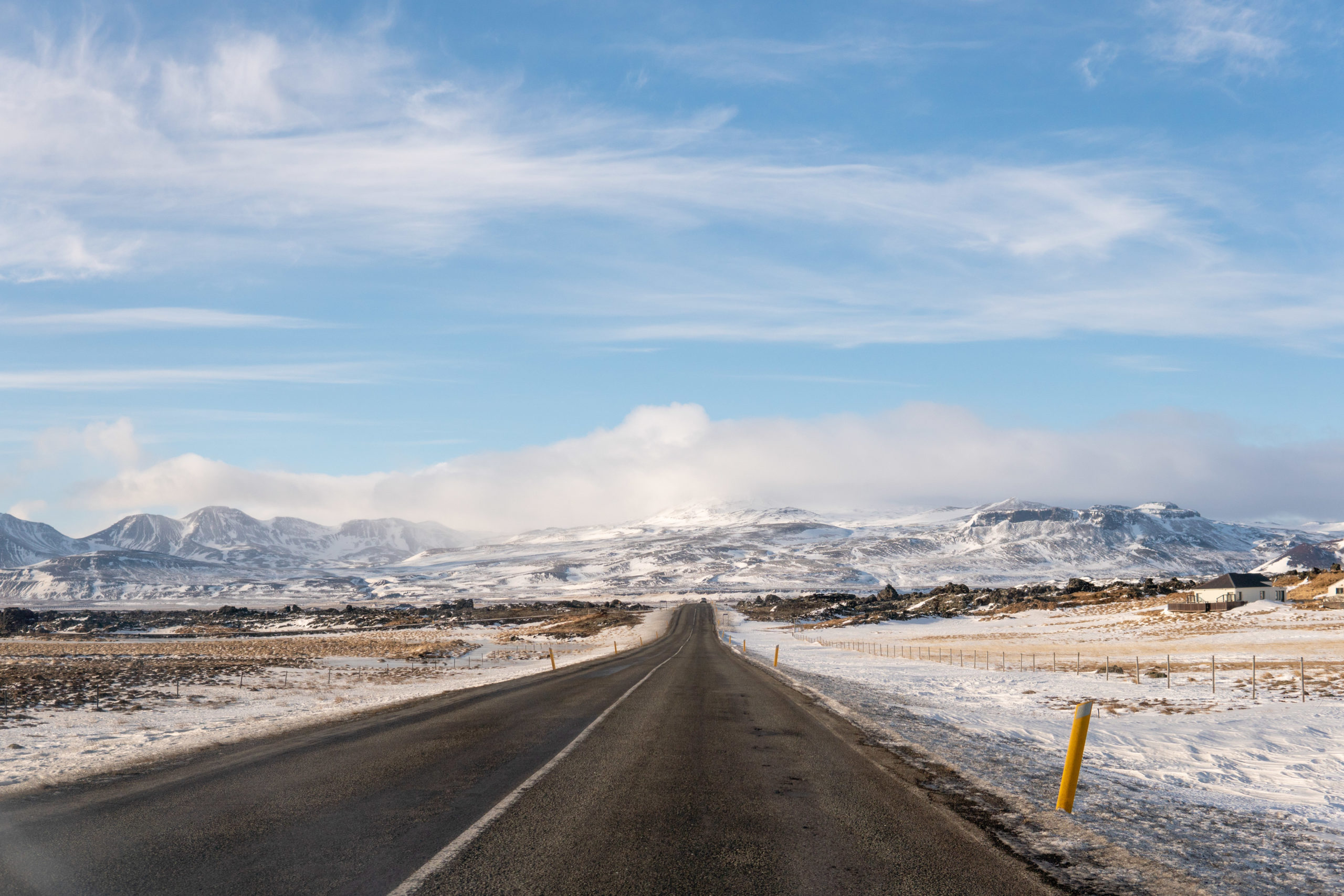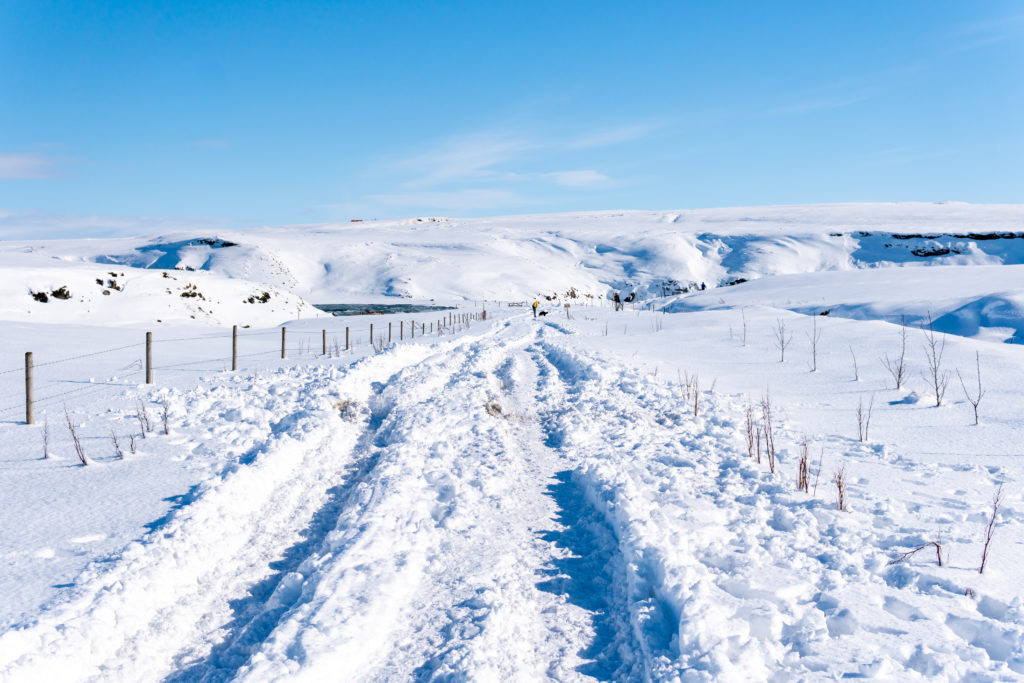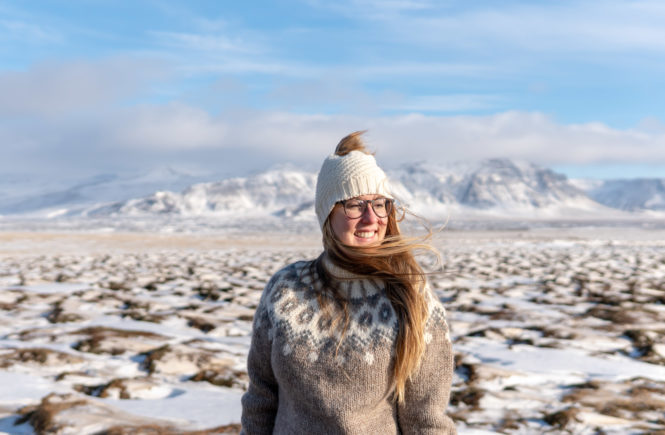
Today I’m sharing all of my tips for driving in Iceland in the winter. If you’ve been following this blog or my Instagram account for any length of time, then you may have noticed that I am a HUGE fan of road trips, especially international road trips. So when I started planning my vacation to Iceland, I desperately wanted to rent a car. I went back and forth with this decision because March is still technically winter in Iceland and if you’ve read anything about this country, the first thing you probably saw was that it has some crazy weather.
Fun fact, I grew up in Wisconsin so driving in snowy, icy conditions doesn’t really intimidate me BUT I also know that it’s dangerous and not very fun. I wasn’t sure if I should risk it and rent a car in a foreign country that I had never been to before or if I should “play it safe” and just hire a local travel company to take me around. In the end I chose the rental car option and I’m so glad I did.
Hopefully these tips will help ease your mind and prepare you for what you could encounter, if you decide to take the adventurous route, like me!
Choosing a Vehicle Model & Features
Make sure you get an SUV with all-wheel drive and spiked tires. Don’t feel embarrassed asking for this, and definitely don’t try and go the cheapest route here. If you’re going to brave the elements, you need to have the right vehicle. The spiked tires were key and something that most SUVs have in Iceland because of the icy road conditions. Don’t forget to ask how to activate these features on the SUV the rental car company gives you when you pick it up.

Insurance & Vehicle Protection
Know your insurance coverage before you arrive. This is the type of place where you absolutely want to plan for the worst case scenario and hope for the best. It’s also a place where you don’t want to “skimp” on protection because anything can happen (again, because the weather conditions can be harsh and unpredictable).
Does your insurance cover nicked windows due to debris or sand/stone damage? The wind in Iceland can be fierce and this can happen easily while driving and you WILL have to pay the rental company if it does.
What about road side assistance in Iceland? If your vehicle goes off the road or gets stuck in snow, who will you call and what will it cost?
And then there is the obvious collision insurance. Know before you go and don’t be afraid to spring for the extra insurance here. Don’t be scared by these various scenarios but be prepared. We saw cars in ditches and cars getting stuck in the snow several times throughout our trip. If this happens to you, what will you do?
Pro Tip: Make sure you have a good grip on your car doors when you open them during windy conditions. The wind can be so strong that it breaks or jams your doors open.
Driving in the Elements
Give yourself a crash course in driving in the elements before you leave on your vacation. Remind yourself of how to break over slippery surfaces and watch out for black ice. Make sure to leave enough space between your car and the car in front of you and don’t be tempted to speed just because the locals are.
Speaking of black ice, don’t drive at night. If you can avoid driving in the dark, do it. There is black ice everywhere during the winter and it’s especially hard to see at night.
If the wind, snow, rain, or fog is so heavy that you can’t see the road in front of you, pull over and wait for it to pass. The weather changes quite quickly in the country and it’s better to sit it out for 30 minutes than to possibly damage your vehicle.
Use your gut and best judgement when heading down side roads. Iceland does a GREAT job of plowing the main roads after snow storms but the side streets are a different story. Just because you have an SUV doesn’t mean that it can make its way through a foot of snow. There were a couple of times on our trip where we could see that the road was questionable so we either skipped it or parked and hiked in to see the sites.

Now that I’ve thoroughly freaked you out, let’s get to the good stuff… If you follow the directions above you will be TOTALLY fine. Accidents can happen in any country but the key is being prepared and knowing what to do in a crisis. We were prepared for all of the above and nothing bad ever happened to us. We used common sense and avoided pitfalls that we saw other tourists facing. We had the BEST time in our SUV and had complete freedom to explore the country at our own pace. I wouldn’t trade that for anything.
If you have additional questions, please feel free to drop me a line. This was one of the most incredible vacations I’ve ever been on and I want everyone I know to have the same experiences.



